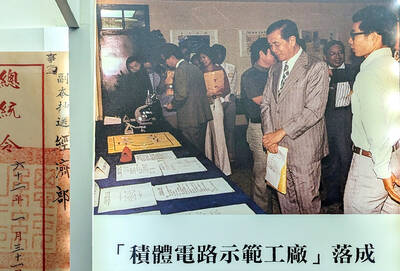Two tribes living on India's Andaman islands may be direct descendents of the earliest modern humans who moved out of Africa 70,000 years ago, scientists reported last week.
Scientists at the Centre for Cellular and Molecular Biology (CCMB) in the southern Indian city of Hyderabad said these two tribes could be the oldest surviving human stock in Asia, and their research may overturn the reigning theory on early human migration.
Most scientists believe that all populations today are descendants of modern humans who migrated out of East Africa about 70,000 years ago to replace early humans elsewhere.
According to the reigning theory, modern humans first migrated from Africa, north along the Nile River, across the Sinai Peninsula, into central Asia before moving east towards India.
"Our findings suggest they also traced a coastal route along east Africa and the Arabian Peninsula into South Asia," said Kumarasami Thangaraj, a senior scientist at CCMB.
CCMB director Lalji Singh, along with Thangaraj and a team of scientists have reported their work in the latest issue of the American journal Science in association with an Estonian team.
An independent investigation by Malaysian and British scientists corroborated the CCMB findings.
The Great Andamanese and Onge tribes have remained isolated in the Andaman and Nicobar islands for tens of thousands of years. This helped the scientists to search for signs of origin that erase quickly when populations intermix.
Scientists at CCMB studied the genetic mutations of five members each of these two tribes to construct a human family tree spanning 70,000 years.
They found the Onge and Great Andamanese -- both Negrito tribes -- resembled the African population more closely than east Asians or the mainland Indian population of today.
"This could have happened only if the two tribes were almost direct descendents of the first human beings believed to have been born in Africa 150,000 years ago," said Lalji Singh.
The CCMB's findings suggest that a group of early humans from Africa used the coastal route to reach the Andaman islands 65,000 to 70,000 years ago. "Their journey could have predated the land journey by 10,000 years," said Singh.
The scientists at CCMB claim the new evidence could make these two tribes the oldest surviving human stock in Asia.
"They are absolutely unique and of great value to humanity," said Singh. Rapid modernization is, however, taking its toll on the native lifestyle of these tribes despite their resistance.
Their populations have also decreased steadily with about 20 Great Andamanese and 98 Onge surviving today. It is believed that before British colonizers reached the islands in the mid-18th century, the Great Andamanese population numbered over 5,000.
These tribes still survive as hunter-gatherer communities using primitive tools and living in the jungle.
"It is the last Eden and it is disappearing fast," said Singh of the island archipelago and its existing native populations.

Oct. 27 to Nov. 2 Over a breakfast of soymilk and fried dough costing less than NT$400, seven officials and engineers agreed on a NT$400 million plan — unaware that it would mark the beginning of Taiwan’s semiconductor empire. It was a cold February morning in 1974. Gathered at the unassuming shop were Economics minister Sun Yun-hsuan (孫運璿), director-general of Transportation and Communications Kao Yu-shu (高玉樹), Industrial Technology Research Institute (ITRI) president Wang Chao-chen (王兆振), Telecommunications Laboratories director Kang Pao-huang (康寶煌), Executive Yuan secretary-general Fei Hua (費驊), director-general of Telecommunications Fang Hsien-chi (方賢齊) and Radio Corporation of America (RCA) Laboratories director Pan
The consensus on the Chinese Nationalist Party (KMT) chair race is that Cheng Li-wun (鄭麗文) ran a populist, ideological back-to-basics campaign and soundly defeated former Taipei mayor Hau Lung-bin (郝龍斌), the candidate backed by the big institutional players. Cheng tapped into a wave of popular enthusiasm within the KMT, while the institutional players’ get-out-the-vote abilities fell flat, suggesting their power has weakened significantly. Yet, a closer look at the race paints a more complicated picture, raising questions about some analysts’ conclusions, including my own. TURNOUT Here is a surprising statistic: Turnout was 130,678, or 39.46 percent of the 331,145 eligible party

The classic warmth of a good old-fashioned izakaya beckons you in, all cozy nooks and dark wood finishes, as tables order a third round and waiters sling tapas-sized bites and assorted — sometimes unidentifiable — skewered meats. But there’s a romantic hush about this Ximending (西門町) hotspot, with cocktails savored, plating elegant and never rushed and daters and diners lit by candlelight and chandelier. Each chair is mismatched and the assorted tables appear to be the fanciest picks from a nearby flea market. A naked sewing mannequin stands in a dimly lit corner, adorned with antique mirrors and draped foliage

The election of Cheng Li-wun (鄭麗文) as chair of the Chinese Nationalist Party (KMT) marked a triumphant return of pride in the “Chinese” in the party name. Cheng wants Taiwanese to be proud to call themselves Chinese again. The unambiguous winner was a return to the KMT ideology that formed in the early 2000s under then chairman Lien Chan (連戰) and president Ma Ying-jeou (馬英九) put into practice as far as he could, until ultimately thwarted by hundreds of thousands of protestors thronging the streets in what became known as the Sunflower movement in 2014. Cheng is an unambiguous Chinese ethnonationalist,